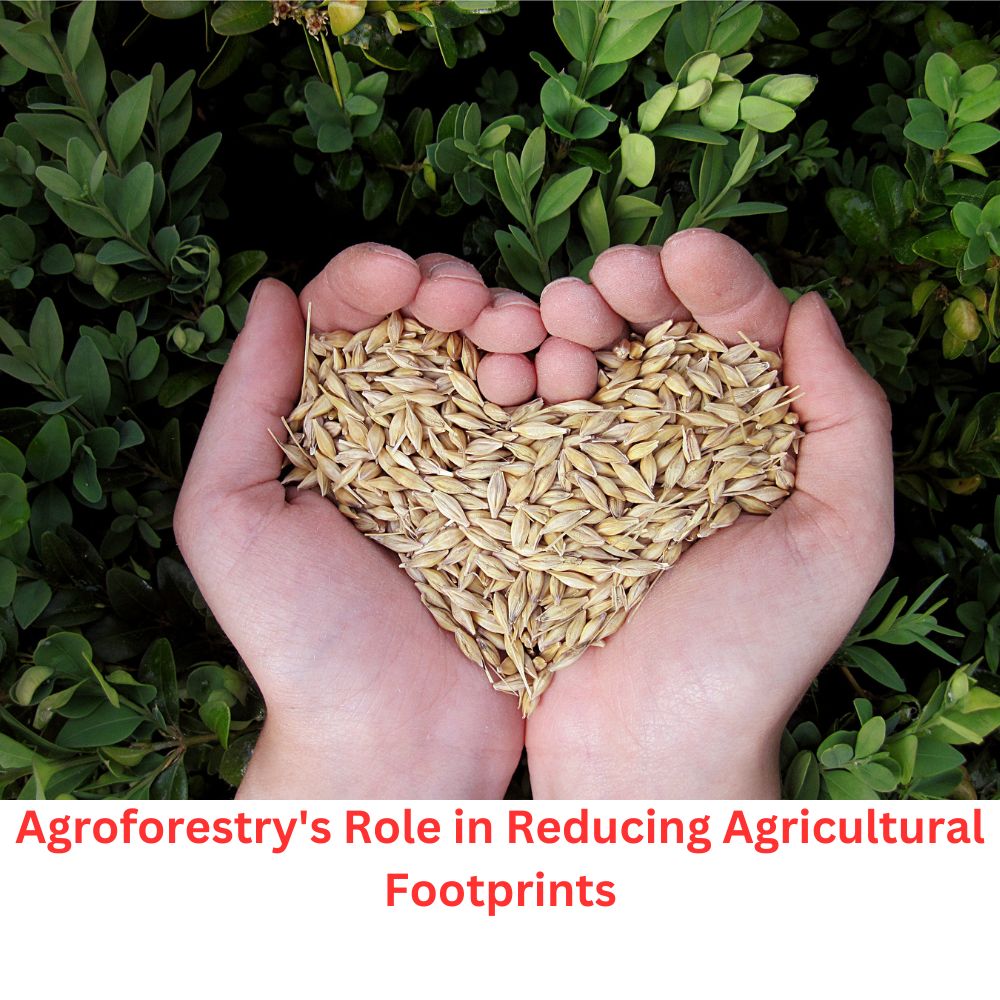In a world facing the challenges of climate change and environmental degradation, the need for sustainable and eco-friendly agricultural practices has never been more pressing. Conventional farming methods, characterized by monoculture cropping and excessive use of chemicals, have taken a toll on our planet’s health, depleting soils, polluting waterways, and contributing significantly to greenhouse gas emissions. Amid these concerns, agroforestry has emerged as a powerful solution, offering a sustainable way to reduce agricultural footprints while promoting biodiversity, sequestering carbon, and enhancing food security.
The Agroforestry Approach
Agroforestry is not a new concept. It draws upon traditional agricultural practices in which trees and crops coexisted harmoniously. However, agroforestry has gained renewed attention and recognition in recent years as a viable and eco-friendly farming method. At its core, agroforestry integrates trees or woody plants with crop or livestock systems, creating synergistic relationships that benefit both the environment and farmers.
Benefits of Agroforestry
- Biodiversity Conservation: One of the most significant advantages of agroforestry is its ability to enhance biodiversity. By introducing trees and shrubs into agricultural landscapes, agroforestry creates diverse habitats for birds, insects, and other wildlife. This increased biodiversity contributes to a more resilient and sustainable ecosystem, reducing the need for synthetic pesticides and promoting natural pest control.
- Carbon Sequestration: Agroforestry plays a crucial role in sequestering atmospheric carbon dioxide. Trees, through photosynthesis, absorb and store carbon, mitigating the impacts of climate change. Enabling trees into agricultural systems allows for carbon accumulation in aboveground and belowground biomass, making agroforestry a valuable ally in the fight against global warming.
- Improved Soil Health: Agroforestry practices help maintain soil fertility and structure. Trees’ leaves, roots, and organic matter contribute to nutrient cycling and soil enrichment. Additionally, tree roots can help prevent soil erosion and reduce nutrient runoff, preserving the quality of nearby water bodies.
- Enhanced Food Security: Agroforestry systems are resilient to climate variations, providing farmers with a more stable source of food and income. Diverse crop and tree species can ensure that some system elements thrive even during adverse weather conditions. This resilience helps safeguard food security in vulnerable regions.
- Economic Viability: Agroforestry can increase farm income by diversifying products. In addition to traditional crops, farmers can generate revenue from tree products like fruits, nuts, timber, and non-timber forest products. These additional income streams can serve as a safety net during challenging times.
Types of Agroforestry Systems
Agroforestry encompasses a range of systems tailored to specific ecological and economic contexts.
- Silvopastoral Systems: In these systems, trees or shrubs are integrated into pastures, allowing livestock to graze while providing shade, shelter, and forage. Silvopastoral systems improve animal welfare and enhance soil fertility.
- Agrisilvicultural Systems: This approach combines annual crops with tree crops or orchards. The trees provide valuable products such as fruits or nuts while offering shade and windbreaks to protect vulnerable crops.
- Agroforestry in Watershed Management: Planting trees along riverbanks and watersheds can help prevent erosion, filter runoff, and improve water quality, benefiting agriculture and local ecosystems.
- Home Gardens and Multistrata Systems: Small-scale agroforestry systems, often found in tropical regions, involve growing a mix of fruit trees, vegetables, herbs, and small livestock in and around homes. These systems provide diverse food sources and improve resilience to climate change.
- Forest Farming: Forest farming combines the cultivation of non-timber forest products, like medicinal herbs or mushrooms, with traditional forestry. It allows for the sustainable harvest of valuable forest resources while conserving forest ecosystems.
Challenges and Considerations
While agroforestry offers numerous benefits, its adoption and expansion face specific challenges and considerations:
- Knowledge and Awareness: Many farmers may need to become more familiar with agroforestry practices or the benefits they offer. Raising awareness and providing training and support are crucial for successful adoption.
- Land Tenure and Policies: Land tenure systems and government policies can sometimes discourage or inhibit agroforestry. Legal and regulatory frameworks should be adapted to promote and support agroforestry practices.
- Market Access: Access to markets for tree and forest products can be limited in some areas. Developing market linkages and value chains for agroforestry products can enhance the economic viability of these systems.
- Management and Maintenance: Agroforestry systems require careful planning and management. Farmers need knowledge and resources to maintain tree-crop combinations effectively.
Success Stories
Several regions around the world have successfully implemented agroforestry practices, demonstrating the potential of this approach:
- Alley Cropping in Africa: In sub-Saharan Africa, alley cropping systems, such as those utilizing nitrogen-fixing trees like Leucaena, have increased soil fertility and crop yields, benefiting smallholder farmers.
- Coffee Agroforestry in Central America: Coffee farms intercropped with shade trees have enhanced coffee quality, provided habitat for migratory birds, and contributed to biodiversity conservation.
- Taungya Systems in Southeast Asia: Taungya systems in countries like Myanmar have integrated timber production with shifting agriculture, supporting rural livelihoods and forest conservation.
Conclusion
As we navigate the challenges of feeding a growing global population while mitigating climate change and protecting our environment, agroforestry emerges as a beacon of hope. By integrating trees into agricultural systems, agroforestry offers a sustainable and eco-friendly path forward. It enhances biodiversity, sequesters carbon, improves soil health, and boosts farmers’ food security and economic viability. The successes in various regions underscore the potential for agroforestry to significantly reduce agricultural footprints and secure a more sustainable future for agriculture and our planet. It is time to recognize the value of agroforestry and invest in its widespread adoption to ensure a brighter, more sustainable future for agriculture and our planet.
